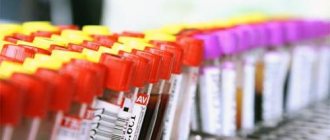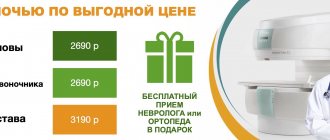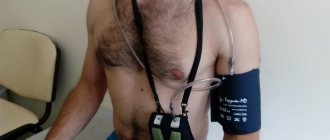HOLTER HELL, HOLTER ECG - Daily (Holter) monitoring of ECG and blood pressure. This is a method for diagnosing diseases of the cardiovascular system, which is based not on short-term ECG diagnostics, but on collecting information over a long period of time (hours, days, days). If the cardiologist cannot identify the causes of the malfunction of the heart muscle, then the patient is prescribed daily ECG monitoring, which can last up to 7 days. Compared with standard ECG and ECG under physical activity, 24-hour ECG monitoring can more clearly identify myocardial ischemia and paroxysmal cardiac arrhythmias. Daily (Holter) ECG monitoring allows you to identify heart activity in the patient’s usual living conditions, and subsequently develop a more appropriate treatment plan depending on the patient’s habits.
Currently, two types of monitoring are carried out:
- Holter ECG monitoring
: diagnosis is similar to the standard ECG procedure, the only difference is in the time intervals (the procedure can last up to 7 days) and that the data is recorded in the memory of a wearable device, and not on a piece of paper. - Daily Holter monitoring (ECG + blood pressure)
: in addition to recording an ECG (as described above), the patient is wearing special cuffs with a portable tonometer, which also records the patient’s blood pressure data into the device’s memory. This method is more common, because it allows you to detect a disruption in the rhythm of the heart and record a temporary disturbance in the functioning of the myocardium.
What is the essence of the study
Daily monitoring is a reliable way to see how well a person’s heart and blood vessels cope with their functions. It is impossible to obtain such information by measuring blood pressure from time to time, since blood pressure surges and heart rhythm disturbances may occur irregularly. In addition, a number of diseases are characterized by mixed symptoms - a whole range of deviations from the norm appears. Therefore, doctors suggest that people who suffer from high blood pressure and are in the so-called “risk group” start filling out a diary of blood pressure fluctuations.
Recommendations from experts
In order for a specialist to receive the most complete and accurate information, a person must behave as naturally as possible and do his usual activities.
But, nevertheless, there are a number of recommendations that the patient must strictly follow:
- the study is carried out against the background of the usual lifestyle - in order not to distort the results, it is not recommended to make any changes to the usual routine;
- the accuracy of the measurement depends on the location of the cuff - if it has moved, return it to its original position (this must be indicated in the diary);
- before starting the measurement, the device beeps - at this moment the hand must be relaxed and kept motionless until the measurement is completed (the cuff is loosened);
- it is forbidden to pinch the tube connecting the cuff and the recorder;
- It is prohibited to take a shower or bath with the cuff on;
- The device must not be wetted, cooled, or exposed to electromagnetic radiation.
Holter AD is an effective technique that allows you to establish an accurate diagnosis and select treatment that is adequate to a person’s current condition. ABPM may show an incorrect result when taking medications, the frequency and dosage of which was unknown to the specialist interpreting the results.
The Extendiagnostics clinic offers 24-hour blood pressure monitoring. If necessary, the procedure for installing the device and its subsequent removal can be performed at the patient’s home. We are always ready to meet you halfway. You can sign up for the study by calling and choosing a time convenient for you.
Why keep a diary of blood pressure changes?
Keeping a blood pressure self-monitoring diary is the right decision for patients suffering from arterial hypertension and heart problems.
It is necessary because it helps to notice not only the time of day at which a person usually experiences surges in blood pressure, but also to track the patient’s body’s reaction to taking certain medications. Most often, the diary is filled out on a form in which the following information is entered:
- date of;
- Times of Day;
- well-being;
- medications taken;
- heart rate and pressure indicators.
Indications
Holter monitoring can be prescribed to a patient if:
- diagnosis of early arrhythmia, myocardial ischemia;
- moderate and severe forms of arterial hypertension that are difficult to treat;
- preventive monitoring of patients with possible threatening ischemia and cardiac arrhythmias;
- chronic constitutional hypotension;
- assessing the effectiveness of therapy;
- newly diagnosed arterial hypertension (the study is prescribed to decide on the need for drug therapy);
- suspicion that the patient has “white coat” hypertension (increased blood pressure when measured).
Who needs research
Indications for this examination include a number of pathological conditions of the patient:
- pain, heaviness behind the sternum;
- the presence of diabetes mellitus in the patient;
- pain in the heart, which can appear spontaneously or be observed constantly, occur even in a calm state or after emotional/physical stress;
- increased incidence of fainting, sudden dizziness, shortness of breath after exercise or at rest;
- diseases of the thyroid gland of various etiologies;
- recent heart attack.
Also, a study using the Holter method is carried out to clarify the effectiveness of the therapy prescribed by the doctor.
Is preparation required?
To pass the examination, serious preparation is not needed. If the doctor considers it necessary, the patient may first undergo a regular electrocardiogram. In addition, men with significant chest hair removal are recommended. This is necessary because the Holter electrodes will be placed near the heart by the doctor, and failure to follow this recommendation may affect the quality of the study. There are no contraindications for examination using the Holter method.
Preparation
It is necessary to contact a cardiologist for 24-hour Holter ECG monitoring if a person feels:
- rare or frequent pain in the heart area that appears suddenly or during certain physical activities;
- abnormalities in the functioning of the heart during strong emotional shocks;
- heaviness and pain in the chest;
- shortness of breath;
- drowsiness during the day, weakness in the morning;
- frequent dizziness, fainting.
Daily Holter ECG monitoring is often used to assess the effectiveness of treatment for diseases of the cardiovascular system. This is a highly accurate and informative diagnostic method that allows you to obtain reliable data on the patient’s heart condition in real time.
How is monitoring carried out?
Recording an ECG using the Holter method is not difficult. Before starting the study, the cardiologist conducts an external examination of the patient. Then the sensors of a compact portable recorder are attached to his chest, after which they are fixed with an adhesive plaster. Nowadays, such a device is available in two types:
- three-channel models;
- twelve-channel models.
If the patient has had cases of allergic reactions, the doctor conducting the study should be warned about this, since sometimes an allergy to the patch with which the electrodes is attached is possible.
The fixing device itself is located on the patient’s belt. You need to wear it without taking it off throughout the day - this is the only way to get objective, accurate information about the state of the cardiovascular system. During monitoring, you should adhere to the following rules:
- do not take a shower or bath;
- do not get close to power lines;
- protect the device from overheating or mechanical damage;
- slightly limit physical activity so as not to cause excessive sweating;
- keep a diary of self-monitoring of blood pressure fluctuations.
In some cases, patients ask themselves: is it sometimes possible to fool the device? The doctors answer is unequivocal - no, this is impossible.
How to properly prepare for a Holter ECG?
In order for daily (Holter) ECG monitoring to be taken without errors, you should properly prepare for the procedure. Any excitement, excitement or anxiety can affect the final chart. It is also worth taking care of the following aspects in advance:
Decoding the device readings
After the device is removed, the cardiologist will enter information from it and the blood pressure monitoring diary into a computer program.
It processes the information received and analyzes data on this patient. Then the patient’s daily electrocardiogram is displayed on the screen. By deciphering its indicators, the doctor can obtain an objective picture of the course of the disease and prescribe/adjust treatment. If the study is carried out by experienced cardiologists, it takes very little time to decipher the obtained indicators and compare them with data from the patient’s diary - about 20 minutes. The result is issued in paper or electronic form.
From everything written above, the following conclusions follow:
- Holter examination is the best way to diagnose many diseases of the cardiovascular system;
- this method is simple, convenient, and has no contraindications;
- the cost of a study in a clinic is affordable for any budget, usually it ranges from 2–4 thousand rubles;
- Based on the examination results, the doctor can prescribe effective treatment and alleviate the course of the disease.
ABPM or HOLTER: to whom, when and why?
Methods of additional functional examination are important in making the correct diagnosis, especially when it comes to blood pressure or heart function. Today we will look at two main ones - “SMAD” and “HOLTER”.
“ABPM” is literally interpreted as 24-hour blood pressure monitoring. This is an examination that allows you to evaluate changes in blood pressure (BP) over a long period of time (24 hours) and confirm or exclude the diagnosis of hypertension.
This examination is also carried out for those who have already been diagnosed and prescribed treatment, to assess the effectiveness of the selected antihypertensive therapy, to make sure that it is effective or to adjust the treatment in time. The essence of the method is as follows: the patient is attached to a cuff on his arm, exactly the same as on a tonometer, which is connected to a recording device. At certain time intervals, which are included in the program, blood pressure is measured, regardless of what the patient is doing, and the numbers are recorded by the device. Based on the measurement results, a graph is constructed, which is assessed by a functional diagnostics doctor and a conclusion is drawn.
First of all, this method helps to cope with hypertension, achieve stable blood pressure during the day and avoid further serious complications that this disease leads to.
“HOLTER” or in other words “Holter monitoring” is monitoring of heart function during the day, according to which the work of the heart is analyzed. This examination allows you to identify various rhythm disturbances, conduction disorders, and myocardial ischemia, since the ECG recording is not carried out for a short period of time, as at a doctor’s appointment - a few minutes, but for the entire 24 hours. Therefore, this survey is more informative.
This examination is carried out as follows: electrodes are attached to the patient’s body and connected to a recording device. A person leads his usual lifestyle, and at this time the ECG records all the changes that occur in the heart. Based on the results, the functional diagnostics doctor makes a conclusion, on the basis of which correct and most importantly timely treatment is prescribed, which sometimes even makes it possible to save a person’s life.
Be attentive to your health!
about the author
- Rastorgueva Marina Dmitrievna
- General practitioner of the first category, head of outpatient department No. 1
- All publications by the author
What patients say
According to reviews of people who completed this study, they did not experience any pain or discomfort while wearing the device.
The device leaves some inconveniences during sleep and active loads, but they are not significant. Important! It is worth getting a certificate from your doctor stating that you are undergoing a study using the Holter method - it is presented to law enforcement officers, it explains the purpose of the device and the essence of its work.
A complete comprehensive diagnosis of the functioning of blood vessels and the heart is the key to your health for many years.
Carrying out
The Holter monitoring procedure is simple. The sensors of a portable ECG recorder are attached to the patient's chest. The fixing device is located on the belt. The patient wears the device for 24 hours, after which he returns to the clinic, and the doctor interprets the study results.
The Holter monitoring procedure is automated and does not cause discomfort. While wearing the device, the patient must keep a diary where the following information is recorded:
- activities during the day (emotional, physical stress: walking, running, carrying weights, excitement when watching a movie or conversation, and so on);
- your well-being while performing any actions, as well as at rest;
- time of change in occupation and rest.
There are two principles for conducting a Holter ECG:
1. Constant monitoring. Over the course of 24 hours, the device records up to 100,000 heart beats. Permanent recording allows you to save information about the cycles of the myocardium some time before the onset of pain or the development of an arrhythmia attack.
2. Fragmented (event-based). It is carried out if the patient experiences symptoms of arrhythmia infrequently. This type of research may take longer than usual. The principle of recording deviations is simple. When the patient feels that a heart rhythm disturbance is occurring, he presses a button on the device and the recorder makes an ECG.
Decoding the results
ABPM results are important for diagnosing many pressure abnormalities in patients, but they must be interpreted. They are deciphered by the doctor, allowing him to make an accurate diagnosis and select a course of therapy. After all, the results of monitoring, depending on the method and device, can be presented as a graph or a chain of blood pressure level records. Here are approximate comparative characteristics of the measurement results:
In this case, the patient is asked to keep a diary, entries in which allow an accurate interpretation of the ABPM results using the device. In the diary, the patient records all the loads and their time, the menu on the day of the study, and sleep time. If the patient experienced stress, he should record this fact in his notes, which will facilitate decoding. It is easy to decipher the readings, since there is a lot of information during this control.
- MRI of cerebral vessels - what it shows, indications and contraindications, how it is performed
Analysis of data obtained from a daily study of blood pressure with devices, the most informative are the following parameters: average blood pressure, time indices of hypertensive and hypotensive pressure, blood pressure range indicators. Moreover, the values are calculated both per day and for certain periods of time. The conclusion about hypertension is given after deciphering the monitoring.
Preparation and carrying out the procedure
Holter monitoring is a simple and painless procedure. A monitor is attached to the patient's body. Installation takes no more than 10 minutes. The patient goes about his daily activities, and the monitor records the work of the heart. The next day, the specialist doctor removes the monitor and analyzes the collected data.
It is recommended to take a bath before the procedure, since water procedures will be prohibited over the next 24 hours. Male patients sometimes require chest hair removal. This is necessary to obtain more accurate research results.
Result
A day later, the patient hands over the device and observation diary to the cardiologist, who takes the data obtained and also transfers the information from the diary to the computer. A special program analyzes the data and displays a daily ECG.
The Filatov Clinic employs highly qualified cardiologists with extensive practical experience. After receiving and interpreting the daily ECG, the doctor writes out and hands over the conclusion to the patient. It takes about 20-30 minutes to get results. If indicated, effective treatment will be prescribed.
Daily monitoring of electrocardiogram (ECG) and/or blood pressure (BP).
This is one of the most accurate and popular research methods in cardiology under conditions of natural patient activity. A common synonym for this technique is Holter monitoring, named after its creator.
Main indications for daily ECG monitoring:
- chest pain;
- a feeling of interruptions in the work of the heart, arrhythmic heartbeat;
- dizziness of unknown origin;
- fainting and pre-syncope;
- pathologically increased (more than 90 beats per minute) or decreased (less than 60 beats per minute) pulse;
- episodes of pathologically elevated (more than 140/90 mm Hg) or low (less than 90/60 mm Hg) blood pressure;
- stopping breathing during sleep (apnea);
- snore;
- the need to clarify changes detected on a routine ECG (suspicion of coronary heart disease, various types of arrhythmias);
- determining the need for surgery for severe rhythm and conduction disorders (implantation of a pacemaker, radiofrequency ablation, etc.);
- assessment of the effectiveness of implanted pacemakers;
- assessment of the effectiveness of drug therapy for arrhythmias, coronary heart disease and other cardiac pathologies;
- detection of asymptomatic but life-threatening arrhythmias and ischemia in hypertrophic cardiomyopathy, recent myocardial infarction, heart failure, long QT syndrome, including during sleep.
The study is most often carried out on the direction of a general practitioner, cardiologist, or neurologist.
Holter monitoring is often performed using devices with the option of 24-hour blood pressure (BP) monitoring. Daily blood pressure monitoring allows you to correctly assess the characteristics of arterial hypertension in a particular patient (systolic, diastolic, nocturnal, etc.), correctly select and evaluate the effectiveness of antihypertensive therapy.
In addition, this technique is often included in the list of patient preparation for surgical interventions under general anesthesia in order to prevent cardiovascular complications during anesthesia.
When to start daily ECG monitoring?
The time of installation of the 24-hour monitor does not matter. The patient can come to the clinic at any time of the day convenient for him. The main thing is that the recording lasts for 24 hours. (The department of functional diagnostics is open on weekdays from 8.00 to 20.00, on Saturday from 9.00 to 16.00).
In some cases, it may be necessary to prescribe multi-day ECG monitoring (up to 3-5-7 days).
How is a cardiac recorder installed?
Installation takes 10-15 minutes. Holter monitoring does not require special preparation of the patient, is painless and safe.
The Holter monitor is installed by a nurse certified in functional diagnostics. She degreases the patient's chest skin with a special solution. If necessary, the hair is shaved. The electrodes are secured with disposable adhesive rings, and sometimes additionally with thin strips of hypoallergenic adhesive tape.
Information about the work of the heart, recorded by electrodes, enters a portable device the size of a palm. The recording device is equipped with charged batteries and packaged in a case similar to a mobile phone case. The patient wears the device under his clothes.
The device has minimal weight and does not interfere with everyday life.
The only important restriction on daily ECG monitoring is the prohibition on water procedures in order to prevent the device from getting wet. A feature of 24-hour blood pressure monitoring is the possible slight discomfort that occurs when air is pumped into the cuff.
What should the patient do?
During monitoring, the patient keeps a written observation diary, where he records the following main points:
- sleep time and quality;
- time of physical activity;
- episodes of emotional stress;
- time of occurrence and duration of certain unpleasant sensations in the chest, head, etc.;
- taking medications;
- meal times and changes in well-being against this background.
How quickly will the result be ready?
After the monitoring period has expired, the patient returns the monitor along with the observation diary to the clinic. Removing the cardiac recorder takes 3-5 minutes. Using special software, the doctor carries out detailed processing of the daily record. Usually, it is possible to receive the research result in printed form the very next day. If necessary, a conclusion on daily monitoring can be sent to the patient by email.
The results of the study are stored in the computer memory for comparative analysis of changes in dynamics during subsequent visits.
A modern multifunctional Holter monitor has appeared in the functional diagnostics department of our hospital.
With its help, you can get all the information in one day, even on an outpatient basis.
The device records:
- daily recording of 3 of 12 ECG (as prescribed by a doctor),
- blood pressure indicators (measured by two methods for accuracy of readings),
- spirogram (a full set of breathing characteristics is recorded),
- snore,
- pulse oximetry recording (measures the level of oxygen in the blood),
- movements and body position of the patient.
The main indications for the use of a multifunctional Holter monitor are:
- suspicion of sleep apnea syndrome and associated pathologies (primarily symptomatic hypertension).
The value of the method is the ability to document the relationship between increased blood pressure and episodes of sleep apnea. Based on the indicators, the doctor will correctly select drug therapy for this category of patients and promptly refer them for therapy and/or surgical treatment of ENT pathology.
- undergoing a preventive examination as part of “express diagnostics”.
Daily blood pressure monitoring allows you to correctly assess:
— features of arterial hypertension of a particular patient (systolic, diastolic, nocturnal, etc.),
— correctly select and evaluate the effectiveness of antihypertensive therapy.
Advantages of a multifunctional Holter monitor:
- Wide range of diagnostic indicators,
- Easy to use accessories (cuff, nasal catheter and finger sensor),
- Light weight of the device (including battery 200 grams)
The doctor receives detailed information about the patient’s health status. Can evaluate each indicator separately and the whole picture. Prescribe precise treatment or individually adjust existing ones.
It’s easy to take care of your health—full-fledged, extensive research is now absolutely not burdensome.
You can make an appointment with specialists from the St. Petersburg Hospital of the Russian Academy of Sciences by calling the contact center: 323-45-35
Patient Instructions
The installation process of the device is painless and does not cause any discomfort to the person.
The only inconvenience that the patient faces is the pressure on the arm with the cuff that occurs during the period of measuring blood pressure. There are certain instructions, following which the patient can prevent possible ABPM errors:
- wear comfortable, loose-fitting clothes;
- do not be nervous and try to avoid stress;
- eat as usual without changing your diet;
- avoid overwork;
- refrain from using medications intended to treat hypertension.
On the day of monitoring, in order to avoid unnecessary worries and unpleasant emotions that can distort the results, the patient is recommended to avoid unnecessary contacts and, if possible, spend time at home, in a calm, relaxed state.
Life schedule is also of great importance. Going to bed should be done at a person’s usual hours. Therefore, you should also refuse to work on night shifts during monitoring or schedule an examination for another day.








